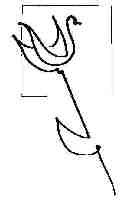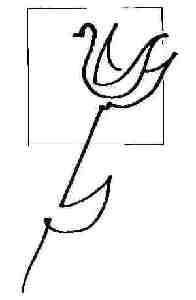
Dr.
Norman Allan's
Newsletter
Vol 2,
No. 5,
May 2006

 |
Dr.
Norman Allan's Vol 2,
No. 5, |
 |
|
*
newspaper
clippings |
||
|
* * *
|
||
| Again,
the bulk of this newsletter is made up of items I've seen in the press,
related to health, that you might have missed, that I found interesting.
It's also an opportunity for me to remind you of my open house on Thurs. from 3 to 6 pm. (Treatment is available, by donation, at the Open House.) |
||
|
* * *
|
||
In a large and
much touted scientific study, one group of patients\Ts was told that
strangers would pray for them, a second group was told strangers might
or might not pray for them, and a third group was not prayed for at
all. the $2.4 million study found that the stranger's prayers did not
help patient's recovery. |
||
|---|---|---|
|
* * *
|
||
|
"Genetics
and Stress Are Found Linked To fatigue Disorder" ... researcher
found that chronic fatigue patients had high levels of hormone secretion,
blood pressure and other bodily responses to stress. |
||
|
* * *
|
||
|
In a recent newsletter we quoted from an article on the work of John Read which suggests that, contrary to current common belief in the scientific community, schizophrenia is strongly associated with early traumatic experience. But here again, as so often, science pushes in two directions... "Schizophrenia
As Misstep By Giant Gene" Researchers
have made progress in understanding how a variant gene linked to schizophrenia
may exert its influence in the brain. ... The gene, called neurogulin-1,
was first implicated in schizophrenia in 2002... Neurogulin in one of
about 10 genes so far linked to schizophrenia. ... (Neurogulin) is one
of the largest genes in the human genome, sprawling over some 1,125,000
units of DNA (he means "base pairs"),
and it generates at least six types of protein
through a procedure known as alternative splicing, in which different
components of the genes are mixed and matched so that each set specifies
a different protein. |
||
|
* * *
|
||
|
"Blasting
of Kidney Stones Has Risks..."
"... patients who underwent the pulverizing procedure, known as lithotripsy, developed diabetes at almost four times the rate of those whose kidney stones were treated by other methods. The lithotripsy group also developed high blood pressure about 50% more often..." |
||
|
* * *
|
||
|
Prozac-type
drugs increase birth risks..." A new study suggests the use of popular antidepressants (SSRI's) such as Prozac, Paxil and Zoloft during pregnancy might be linked to premature birth, low birth weights, |
||
|
* * * |
||
|
"Common
Genetic Link to Obesity is Discovered" Apparently, there are many genes links to obesity but hitherto those discovered were all rather rare and obscure. However ... The new genetic variant is common, occuring in 10 pwercent of Europeans and African-American populations. ... Those who inherit two copies, one from each parent (hey, that's 10% time 10% which is 1% - hardly a great factor), have a 22% extra risk of being obese. |
||
| * * * | ||
|
Research
Ties lack of Sleep To risk for Hypertension In a study of more than 4800 men and women, people ages 32 to 59 who got five hours of sleep a night or less were about 60% more likely to develop hypertension... |
||
|
* * * |
||
|
Dr. Norman Allan 6:30
to 9:00 at 2 College Street, suite 305 |
|
|
| Tai
Chi's "first form" is standing. "First form" is a starting
place: a place from which to observe (and correct) our posture; a place
from which to observe the "self".
Paul Marcus developed a technique using "first form" that helps us perceive how we stand and who we are. It is a practice that brings us into "presence". I have adapted Paul's "first form" work into a therapeutic tool to explore and experience our physical and emotional stance. This workshop helps to reveal our place in the world in it's many senses.
|
||
|
Enrollment
is a limited Phone
416 928 9272 |
||
|
* * *
|
||
|
Dr. Norman Allan's Newsletter, April 2006: snippets from newspapers, various, which I hope are of interest. Dr. Norman Allan's Newsletter, March 2006: as above Dr. Norman Allan's Newsletter, February 2006: Dr. Norman Allan's Newsletter, January 2006: Dr. Norman Allan's Newsletter, December 2005: Dr. Norman Allan's Newsletter, November: 2005 Dr. Norman Allan's Newsletter, October: 2005 Dr. Norman Allan's Newsletter, August/September: 2005 Dr. Norman Allan's Newsletter, June/July 2005: Dr. Norman Allan's Newsletter, May 2005: Dr. Norman Allan's Newsletter, March/April 2005: an essay on immune tonics published in "Healthy Directions" - and snippets from newspapers, various, which I hope are of interest. Dr.
Norman Allan's Newsletter, February 2005: snippets from newspapers,
various, which I hope are of interest - and a discussion of "C Reactive
Protein" as an indicator of risk for heart disease. |
||
|
* * *
|
||
| Not new, but still noteworthy:- | ||
|
visit
Dr. Allan's home page at
www.normanallan.com |
||